CEO Talks: Fenwick’s John Edgar on U.K. Retail, the Challenges of a Family-owned Retailer
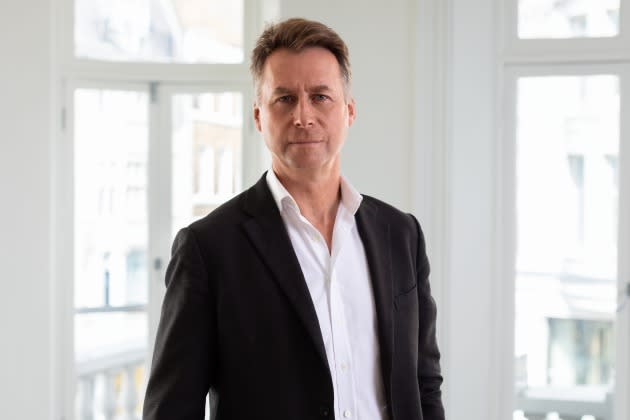
LONDON — In the emerging Web 3.0 era and with physical retailers downsizing, or shutting altogether, a nationwide, family-owned department store chain may sound like an anachronism.
Not Fenwick. The retailer, one of the oldest founder family-owned businesses in the U.K., is an outlier in many ways. It has had its ups and downs over the years, but has refused to become just another casualty of the times.
More from WWD
The 140-year-old business has instead embraced its longevity and core values. It has invested, upgraded the business and focused on what it does best: serve local customers from its nine wholly owned physical locations across England, and online.
In early 2020 the Fenwick family hired a new chief executive officer, John Edgar, a seasoned retail manager who had previously been chief financial officer at Selfridges and at Harrods. As a senior adviser at The Boston Consulting Group, Edgar has also worked behind-the-scenes at Neiman Marcus Group, with the current CEO Geoffroy van Raemdonck.
Edgar joined Fenwick just as the U.K. began locking down due to COVID-19. Over the past two years he’s navigated Fenwick through the pandemic; jumpstarted the online business, which now ships to 40 countries, and set out a refreshed vision for the store, with a more premium offer; fewer discounts and promotions, and a focus on lifestyle and immersive experiences.
Over the last nine months the store has taken on 100 new fashion brands including Self Portrait, Marni, and Rosie Assoulin, and added more than 40 niche skin care and fragrance brands, such as D.S. & Durga, Robert Piguet and BDK.
Fenwick is also investing. As it marks 140 years in business, it has revealed plans to funnel 40 million pounds into its flagship in Newcastle, England, where it has had a presence since 1882.
The architect Ben Mailen will redesign the exterior and is working alongside Sybarite, the London architecture and design firm, which is working on new atria for the historic building and the renovation of the beauty hall and accessories area.
Here, Edgar talks about Fenwick’s plans, how the British retail landscape is evolving and how a small, family-run business stays alive in difficult times.
WWD: What was your vision for Fenwick when you joined?
John Edgar: I started during the pandemic, and no one knew how long it was going to last, or how deep it was going to be. The focus was just survival, then stability, then growth. We just had to make sure we were in charge of our own destiny. The most important thing I did was to make sure that we had an online offering. When I arrived, it was very small and the site had been closed due to the pandemic. Someone who was leaving the business said to me, “Don’t bother about online. It’s a waste of time.” It was advice that I ignored. We had online back up and running [quickly] and it became a super-important channel for us during lockdown, and has become increasingly so.
WWD: At what point did the strategy turn from survival into stability?
J.E.: We achieved the survival stage pretty quickly in the summer of 2020. We have a very strong balance sheet compared to most retailers of our size, and that really helps. By the autumn, I presented my vision for the company to the shareholders, and we did a couple of things. We looked at changing the business model to refocus on full-price trading, holding sales only when we needed them. We focused on the quality of product, great service, putting the customer right at the heart of our decisions. None of this is rocket science, obviously, but the fact is, we weren’t doing a lot of it.
We also introduced new brands and really took advantage of what we learned during the lockdown. As retailers dropped out of the market, we became more important in our local markets. And we were able to become more and more dominant. We were offering the customer a point of difference, something they couldn’t get anywhere else and great service — all of which seems completely basic. It helped us to establish a competitive advantage, and competitive dominance in virtually all our markets, apart from London.
WWD: What other changes were you able to make during the pandemic?
J.E.: We’ve been able to get brands that, in the past, we could only distribute in London. Today, those brands are very happy to sell in most, if not all, of our other locations. They see the business model changing and becoming more premium. We introduced athleisure; Fenwick at Home, which we launched during the pandemic, and a sneaker offer, which is now in all of our stores. We even did some fun things like bring in Juicy Couture, which has really taken off. It means we’ve been able to entice a much younger customer than we’d been able to do historically. The younger customer loves shopping in-store when you give them the right product.
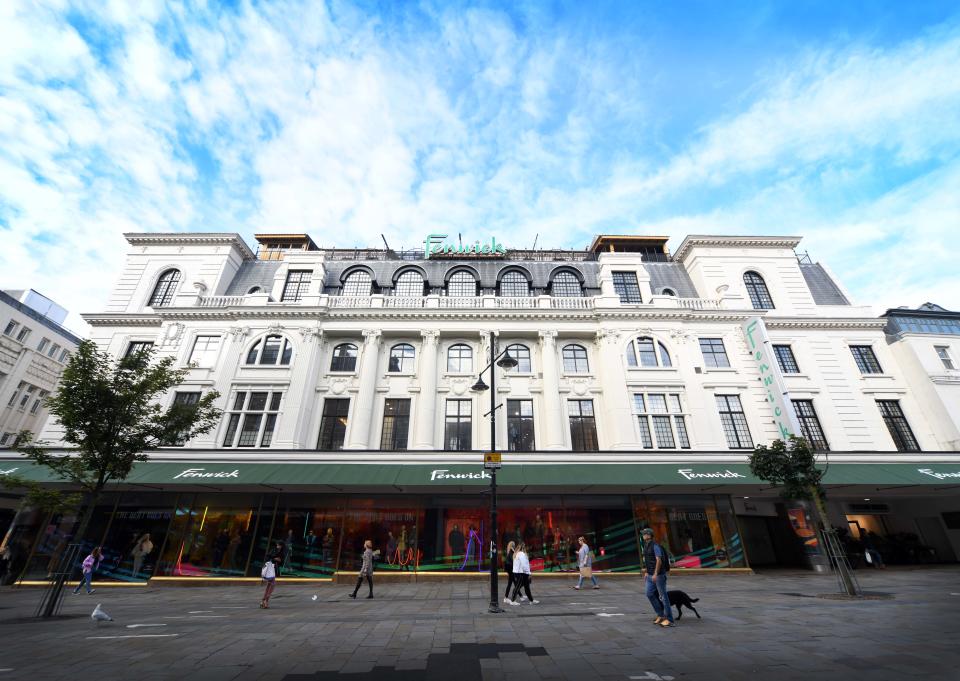
Courtesy image.
WWD: You also upped your food and hospitality game, too. Can you talk about that?
J.E.: During the pandemic we could only offer food outdoors for certain periods during the day, so we wanted to put a terrace restaurant outside. And we worked hard trying to find the right partner and we found 123V, a vegan restaurant. It’s located on the terrace outside our Bond Street store, and inside as well. It’s the best vegan restaurant in London. It’s fantastic, and gives a point of difference to the store, and it’s one of the only places to eat on Bond Street. It also brings that element of something different to our store, to Bond Street and that area of Mayfair. It brings a little bit of café culture.
WWD: What is it like working with a family-owned company, especially one that’s been involved with day-to-day operations for 140 years?
J.E.: It was the family that approached me to join them, and there hasn’t been one moment that I’ve not felt supported by the family. There are always ups and downs, and if you’ve got 30-plus shareholders or family members, you are always going to have different points of view. I like family businesses because they make decisions for the long term, which usually are better decisions. They’re not looking at short-term gain; they’re not like private equity. They’re not there just to extract value. Long-term thinking benefits this kind of business. It’s hard to get rich quick running a branded department store. It’s the family’s money, ultimately, and you’ve got to respect that. They’ll make decisions that sometimes you might not think are the right ones, or they’ll make their decisions in a different, or strange, way. All you can do is steer and advise them. Also, you’ll always have a boss, no matter how far up the ladder you go.
WWD: How did you bring your experience at Selfridges and Harrods to bear on your work at Fenwick?
J.E.: I think both of those businesses are unique, and you learn lots of things — good and bad — from them. Harrods in particular has a unique business model that you couldn’t replicate anywhere else. What I learned at Selfridges is that you’ve got to be prepared to take risks and make leaps of faith. If you don’t do that, you become boring, and just like everybody else. People want to be excited, surprised and amused and all of those different things. They don’t want the same old stuff. Having that family ownership was really good for Selfridges because they made decisions for the long term. It’ll be interesting to see how that changes going forward. Harrods was a less creative business [than Selfridges]. It was a very successful business, but in a very different way.
WWD: Can you talk about your consultancy work at Neiman Marcus? How different are American and British retail?
J.E.: It’s just the scale. The businesses in America are just enormous. Many businesses in the U.K. wouldn’t even hit the radar in the U.S. because the scale is so, so different. What has always shocked me is the sheer volume of businesses in America that are turning over billions of dollars. At Neiman Marcus, a key part of what we were doing was getting them off discounting and into prime selling. We also were getting the business to believe it could strengthen its commercial relationships with the brands.
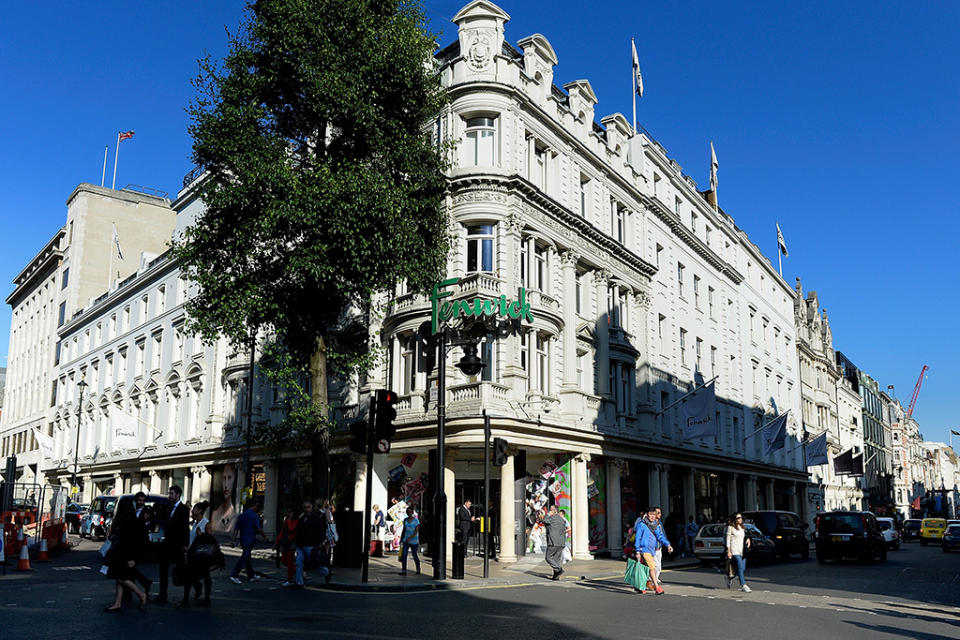
Courtesy
WWD: How will the U.K. retail landscape shake out in these post-pandemic years? You’ve mentioned before that the high streets here have traditionally had far too many shops.
J.E.: I think the market is much more nervous today about saying “Let’s achieve growth by opening lots of shops.” At the same time, people realize how hard it is to make money only online. And we have to remember that, especially in fashion, about 80 to 85 percent of business is still done in shops, with online penetration of 15 to 20 percent. It’s about getting the right shops, locations and products. It’s not rocket science. With online, it’s about having the right service and product, just like in shops.
It’s going to be interesting to see what happens with the online landscape, how many pure players open more shops and how many collaborations there will be between pure players and physical shops. Also, how many pure players will become just software providers? What will happen to marketplaces? Look around the world and you’ll see it’s the most dominant retail solution. The exception is the U.K., where department stores are the first marketplace.
WWD: You mentioned that for the fall 2022 season, 95 percent of Fenwick’s womenswear brands will be sold online. What are your strategies for growing the business?
J.E.: Growth has got to be sustainable in every definition of the word. You can get growth very quickly online by giving discounts, but we’re not doing that. Conservatively, we’re targeting online sales to be 20 percent of turnover. Some of that is about relationships with brands, and getting them to understand our journey. We are only two years into that journey and we’re way way, way late, but we’re growing like mad at the moment, and we’re refining and redefining that model. When I started, online at Fenwick was a tiny beauty business. It’s why I call Fenwick a 140-year-old start-up.
Commercially, we do any model: dropship, e-concession, wholesale. We will interface with any brand any which way they want. Coming a bit later to the [online] party has helped us on that basis, and we plan to push some models, such as dropship, further because that de-risks some of our product categories. You can’t just pin your colors to one solution, you’ve got to be agile. That’s how physical stores operate – with consignment, concession and wholesale models.
WWD: How has owning your own commercial real estate helped the business, especially in these tough years for retail?
J.E.: It gives you so much room for flexibility. The world is littered with department store failures where they haven’t [owned their real estate assets]. Yes, we’ve had to put in a bit of debt and leverage our property a little bit. But owning property allows us to do things that we wouldn’t be able to do. And if we didn’t own our properties today, we’d be in a very difficult place. Let’s face it, the pandemic has been like a war, and then coming out of that, you’ve got some very choppy times as well. So ownership has put us in a much better position than most retailers.
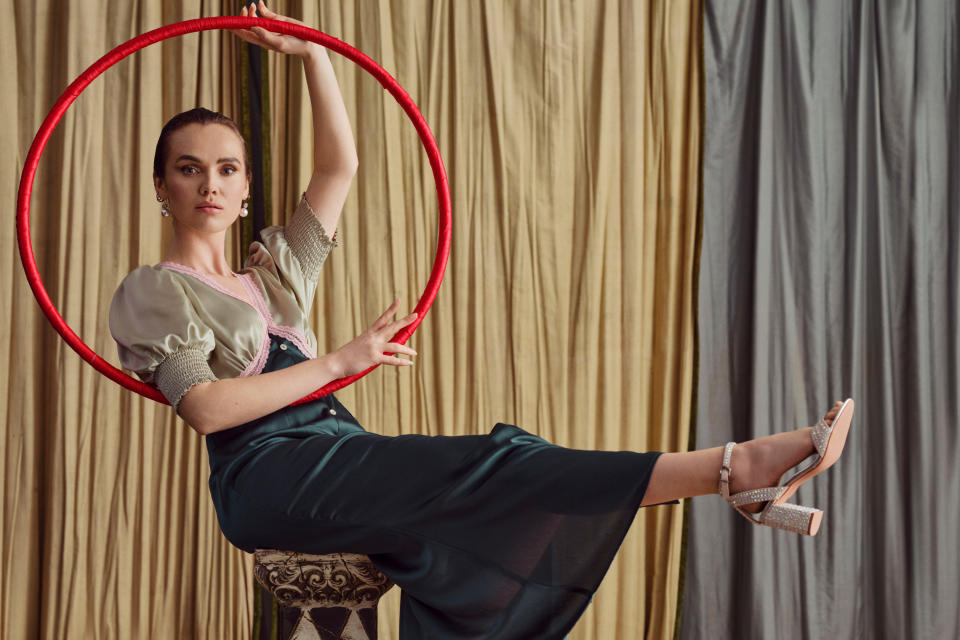
Courtesy image.
WWD: Speaking of retail failures here in the U.K., what opportunities do you see arising from the collapse of major chains such as Debenhams, which was known for its big beauty offer, and the brands that once belonged to Arcadia Group?
J.E.: Our opportunities are primarily in beauty, and it depends on the location. Our Colchester store [in Essex] it a perfect example. Debenhams dropped out of the market, and our beauty business shot through the roof. We’ve also introduced new [clothing] brands that you can’t find elsewhere. In Newcastle we’re just about to launch Lululemon, which isn’t available anywhere else in Newcastle, and that will bring a completely different type of customer.
WWD: How do you manage a store like Fenwick, and attract customers, at a time when inflation is soaring, taxes are rising and there is a cost-of-living crisis?
J.E.: We focus on what we can control. There’s a lot we can do to manage energy costs, for example, and we’re also in the middle of re-lamping our stores and moving to LED lighting. About six to 12 months ago, we started putting in new building management systems so that our store estate becomes more efficient to run. From a consumer point of view, we are positioning ourselves in the right premium bracket and offering our customers merchandise and service they can’t really get anywhere else. That’s going to put us in a better place. In June we also introduced a rental service with Front Row London in the Bond Street and Newcastle stores.
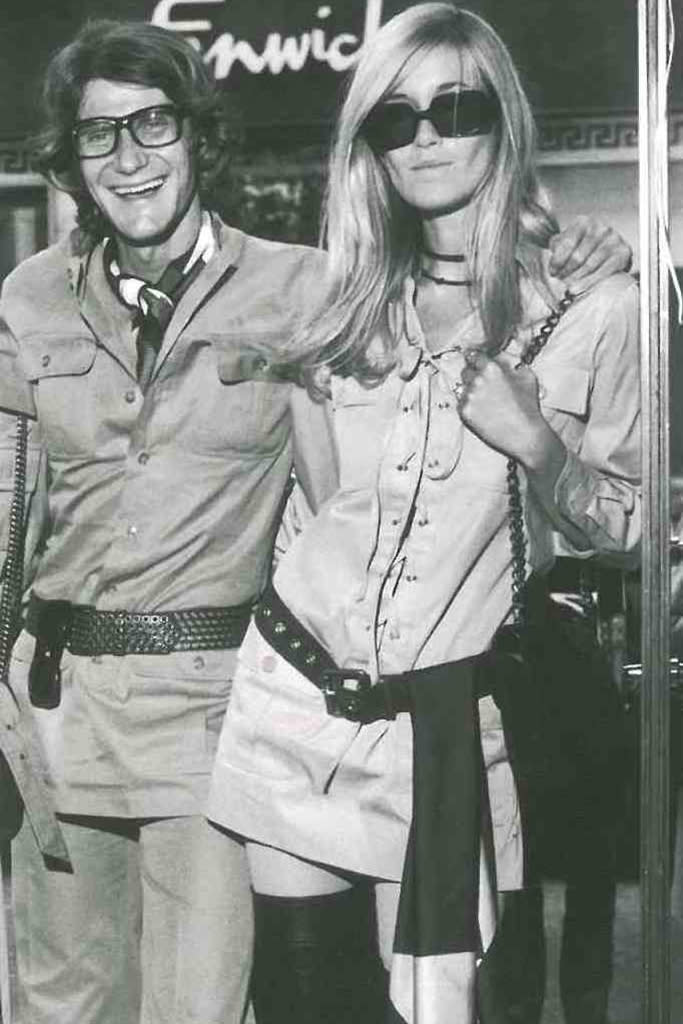
Courtesy
WWD: How has the business of running a retailer changed since you first started working in the industry in the ’90s?
J.E.: When I started, online didn’t exist, although the principles of retail stay the same. It’s about service and product. There was a period of time when that was lost and retail became very dull, very commoditized. Point of difference has become more important, and also an understanding of management. All that retailers really do is buy and sell stock, and if you’re not in control of your stock then you’ve got a real problem. All the other stuff is just fluff that helps us buy and sell stock. But the fluff is important.
Working at Harrods and Selfridges wasn’t easy. Every time you made X million, the challenge was how do you make another X million? I don’t think retail has ever been that easy, although I do think there are probably more external factors that impact us now than there have been for quite some time.
WWD: Who have been your mentors in the business?
J.E.: I originally started at the Burton Group before Philip Green bought it, and at the time that was known as the university of retail. At Selfridges, Paul Kelly [former group managing director at Selfridges] was inspirational. He was tough, he was a bit old school, and he plowed down everyone’s throat the basic principles: service, product, manage your stock. He was annoyingly right most of the time.
WWD: How do you spend your down time?
J.E.: I do a thing called ski mountaineering, which is kind of a niche sport. It is like ski touring, but with racing. You’re in a team of two or three people, and the races are usually between 50 and 100 kilometers [30 and 60 miles]. And you climb. You’re either going up with skins on your skis, or your skis on your back, and sometimes you’re ice-axe climbing, going over lots of mountains, mainly in Switzerland, France and Italy. It’s a great de-stressor because you don’t think about much else when you’re doing it. But I’m probably going to do that less and less. I’m getting too old now.
Sign up for WWD's Newsletter. For the latest news, follow us on Twitter, Facebook, and Instagram.

